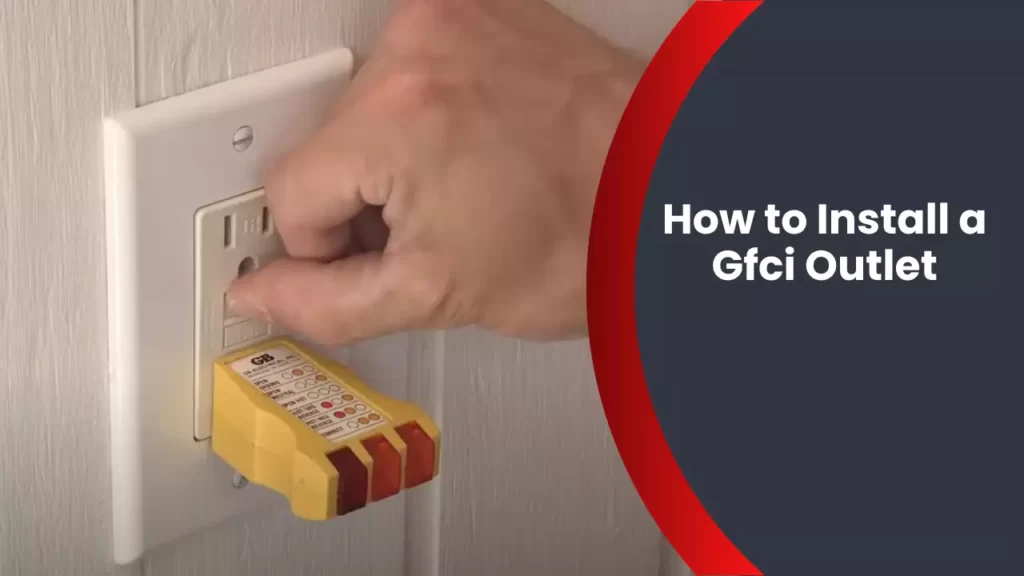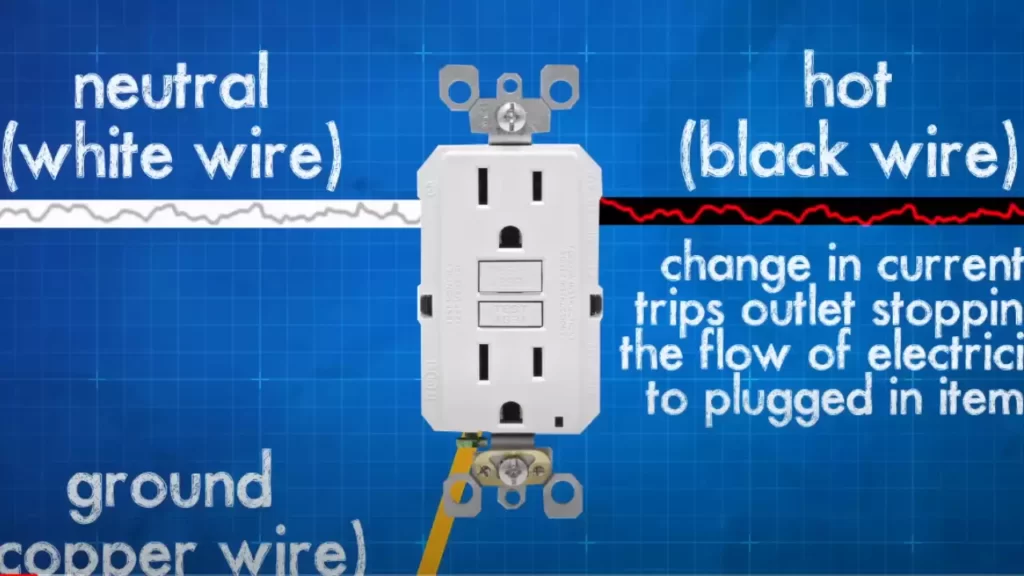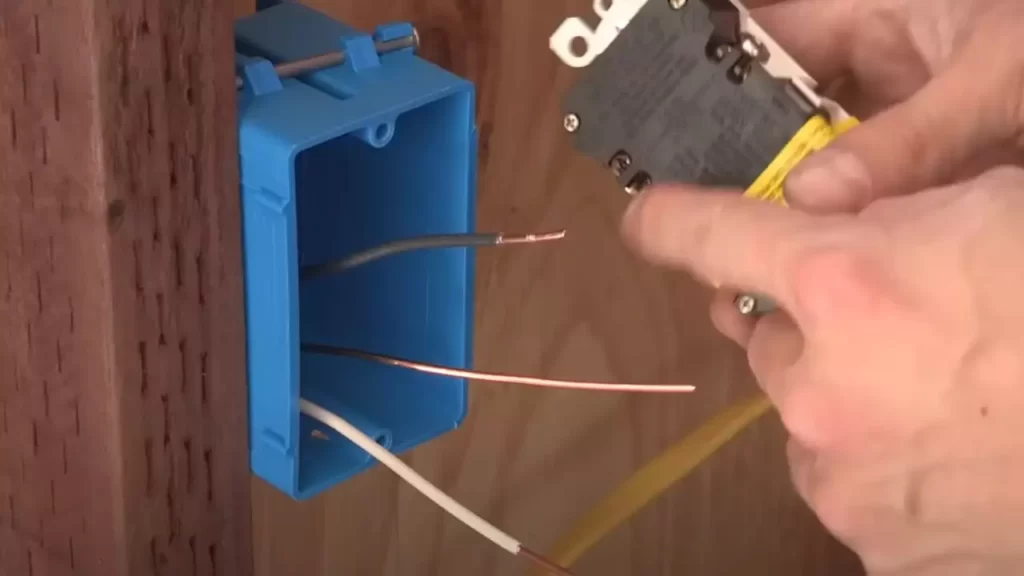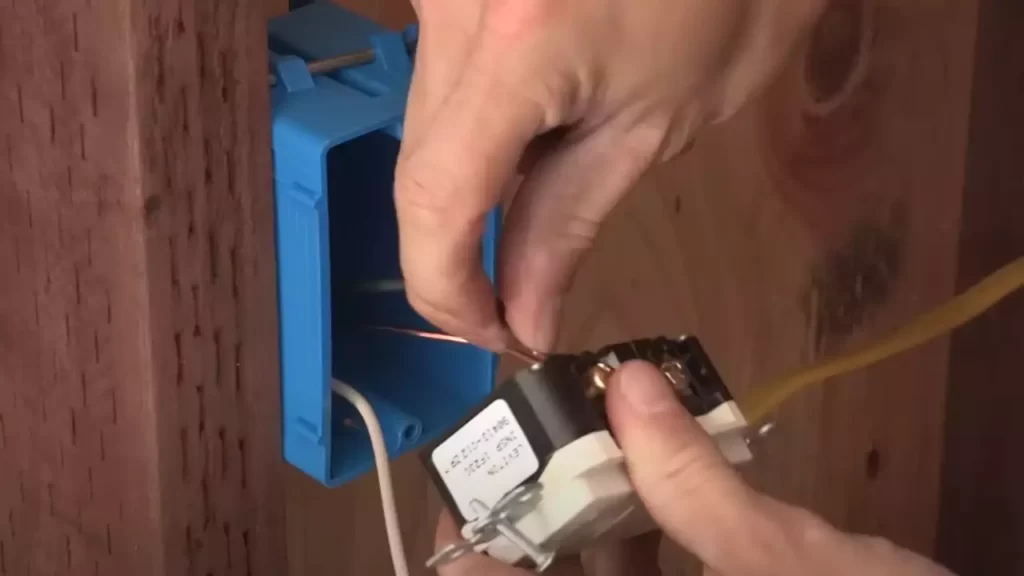To install a GFCI outlet, turn off power to the circuit, remove the existing outlet, connect the GFCI wires, and secure the outlet to the electrical box. Now, let’s explore the step-by-step process of installing a GFCI outlet in detail.
Installing a GFCI outlet ensures protection against electrical shocks and is required in areas such as kitchens, bathrooms, and outdoor spaces. Before starting the installation, ensure you have the necessary tools, such as a screwdriver, wire stripper, and voltage tester, and turn off the power to the circuit at the main electrical panel.
Once the power is off, remove the existing outlet by unscrewing the mounting screws and disconnecting the wires. Next, use wire connectors to connect the corresponding wires to the GFCI outlet, ensuring the proper configuration. Finally, secure the GFCI outlet to the electrical box and test it before restoring the power. By carefully following these steps, you can successfully install a GFCI outlet.
Understanding The Importance Of Gfci Outlets
What is a GFCI Outlet and Why is it Important?
GFCI stands for Ground Fault Circuit Interrupter. It is an electrical device that is designed to protect you from electrical shocks and prevent electrical fires caused by overheating. GFCI outlets have become a standard safety feature in homes and businesses, and it is crucial to understand their importance.
The Function and Benefits of GFCI Outlets
GFCI outlets are designed to monitor the flow of electricity. They work by constantly comparing the outgoing and incoming currents. If there is an imbalance or a leakage of electricity, the GFCI outlet will instantly trip, cutting off the power supply to the connected device or appliances. This quick response mechanism plays a crucial role in preventing dangerous electrical shocks and potential electrical fires.
GFCI outlets provide numerous benefits, making them an essential component in any electrical system. Here are some of the major benefits you can expect from the installation of GFCI outlets:
- Enhanced Safety: GFCI outlets act as a defense mechanism against electrical shocks, reducing the risk of life-threatening injuries. They are especially critical in areas near water sources, such as bathrooms, kitchens, and outdoor spaces.
- Code Compliance: Compliance with electrical safety codes and regulations is crucial for every property owner. Installing GFCI outlets not only ensures the safety of occupants but also helps meet these electrical codes, avoiding potential fines or legal issues.
- Protection for Equipment: In addition to safeguarding individuals, GFCI outlets also protect electrical equipment from damage caused by electrical surges, reducing the need for costly repairs or replacements.
- Peace of Mind: Knowing that you have installed a safety measure that significantly lowers the risk of electrical accidents can provide peace of mind for both homeowners and business owners.
How GFCI Outlets Protect Against Electrical Shocks and Overheating
GFCI outlets provide a high level of protection against electrical shocks and overheating. They function by continuously monitoring the flow of electricity and interrupting the current if any irregularity is detected. Here is how GFCI outlets protect against these dangers:
- Grounding: GFCI outlets are equipped with a grounding wire that connects to the ground or earth. This ensures that any excess electricity is safely directed away, preventing the risk of electrical shocks.
- Fault Detection: The GFCI outlet continuously monitors the electrical current flowing through it. If there is any leakage or imbalance, even as little as 5 milliamperes, the GFCI outlet will detect it and instantly shut off the power supply.
- Rapid Response: The response time of GFCI outlets is incredibly fast, typically within 25 milliseconds. This swift action helps prevent accidental electrical shocks, reducing the likelihood of severe injuries.
- Overload Protection: GFCI outlets are designed to detect and protect against overheating caused by overloaded circuits. This helps prevent electrical fires that can result from excessive heat.
In conclusion, installing GFCI outlets is an essential safety measure that protects against electrical shocks and overheating. These outlets offer enhanced safety, compliance with electrical codes, protection for equipment, and peace of mind. By continuously monitoring the electrical current and providing rapid response, GFCI outlets play a crucial role in preventing accidents and electrical fires.

Assessing Your Electrical System
Before you proceed with installing a GFCI outlet in your home, it’s important to assess your electrical system and ensure that it supports the use of GFCI outlets. This step is crucial to ensure the safety and functionality of your electrical setup. In this section, we will cover the key aspects that you need to consider when assessing your electrical system.
Determining if your current electrical system supports GFCI outlets
The first thing you need to do is determine if your current electrical system is compatible with GFCI outlets. GFCI, which stands for Ground Fault Circuit Interrupter, is designed to protect you from electrical shocks and detect leaks in the electrical circuit. To determine if your electrical system supports GFCI outlets:
- Check the age of your home’s wiring. Older homes may not have wiring that is compatible with GFCI outlets.
- Inspect your circuit breaker panel. Look for breakers labeled as GFCI or AFCI. If you have these breakers, it’s a good indication that your electrical system supports GFCI outlets.
- If you’re uncertain, it’s best to consult a licensed electrician who can assess your electrical system and provide expert advice.
Identifying the suitable locations for GFCI outlet installation
Once you have determined that your electrical system supports GFCI outlets, the next step is to identify the suitable locations for installation. GFCI outlets are typically required in areas where the risk of electrical shock is high, such as:
- Kitchens
- Bathrooms
- Garages
- Outdoor areas
Take a walk around your home and identify areas that have a higher likelihood of exposure to water or moisture. These areas are prime candidates for GFCI outlet installation.
Checking the voltage requirements for GFCI outlets
Before purchasing GFCI outlets for installation, it’s essential to check the voltage requirements. Most GFCI outlets are designed for 120V circuits, which are standard in residential homes. However, certain appliances or specialized circuits may require 240V outlets. To determine the voltage requirements:
- Refer to the manufacturer’s specifications for the GFCI outlets you plan to purchase.
- If you’re uncertain about the voltage requirements, consult an electrician who can guide you in selecting the appropriate GFCI outlets for your specific needs.
Remember, installing GFCI outlets is an important safety measure that can protect you and your family from electrical hazards. By assessing your electrical system, determining suitable locations, and checking voltage requirements, you can ensure a successful GFCI outlet installation.

Step-By-Step Guide To Installing A Gfci Outlet
If you are looking to upgrade the electrical outlets in your home for increased safety and protection against electrical shocks, installing a GFCI (ground fault circuit interrupter) outlet is a wise choice. A GFCI outlet monitors the flow of electricity and can quickly shut off power to prevent electrical shocks. In this step-by-step guide, we will walk you through the process of installing a GFCI outlet, from gathering the necessary tools and materials to testing the outlet for proper functionality.
Gathering the Necessary Tools and Materials for Installation
Before you begin installing a GFCI outlet, it is important to gather all the necessary tools and materials. Here is a list of items you will need:
| GFCI outlet and cover plate | Wire cutters/strippers |
| Voltage tester | Screwdriver (flathead and Phillips) |
| Electrical tape | Needle-nose pliers |
| Wire nuts | Electrical box (if not already installed) |
Shutting Off the Power Supply to the Designated Circuit
To ensure your safety, it is crucial to shut off the power supply to the circuit where you will be installing the GFCI outlet. Follow these steps:
- Locate your home’s electrical panel.
- Identify the circuit breaker that controls the designated circuit.
- Switch off the circuit breaker to cut off power to the circuit.
- Test the circuit using a voltage tester to verify that there is no power.
Removing the Existing Outlet and Preparing the Wires
Once the power is turned off, you can proceed to remove the existing outlet and prepare the wires for the GFCI installation. Follow these steps:
-
- Remove the cover plate and unscrew the outlet from the electrical box.
- Carefully disconnect the wires from the existing outlet using a screwdriver.
- Inspect the wires for any signs of damage or wear and repair or replace as necessary.
- Strip the insulation from the ends of the wires using wire cutters/strippers.
2
Wiring the GFCI Outlet Following the Manufacturer’s Instructions
Properly wiring the GFCI outlet is essential for safe and reliable operation. Follow the manufacturer’s instructions provided with your specific GFCI outlet, but here are the general steps:
- Identify the line wires (incoming power) and load wires (outgoing power).
- Connect the bare copper or green wire to the green grounding screw on the GFCI outlet.
- Connect the white neutral wire to the silver terminal on the outlet.
- Connect the black hot wire to the brass terminal on the outlet.
- Securely tighten the terminal screws.
Installing the GFCI Outlet into the Electrical Box
With the wiring complete, it’s time to install the GFCI outlet into the electrical box. Follow these steps:
- Gently fold the wires into the electrical box, making sure they do not touch the sides.
- Align the GFCI outlet with the screw holes on the electrical box.
- Securely screw the outlet to the electrical box using a screwdriver.
Testing the GFCI Outlet to Ensure Proper Functionality
Before finalizing the installation, it is crucial to test the GFCI outlet to ensure it is functioning correctly. Follow these steps:
- Turn on the power supply to the designated circuit.
- Press the “TEST” button on the GFCI outlet.
- The power should shut off immediately, and the indicator light should turn off.
- Press the “RESET” button to restore power to the outlet.
Finalizing the Installation and Restoring Power to the Circuit
With the GFCI outlet tested and working correctly, you can now finalize the installation and restore power to the circuit. Follow these steps:
- Push the GFCI outlet into the electrical box.
- Attach the cover plate to the outlet using the provided screws.
- Turn on the circuit breaker to restore power to the designated circuit.
Congratulations! You have successfully installed a GFCI outlet, enhancing the electrical safety of your home.

Troubleshooting Common Issues
Installing a GFCI outlet can provide enhanced safety in your home, but like any electrical installation, it can sometimes face issues. Understanding how to troubleshoot common problems can help you ensure that your GFCI outlet is functioning properly and protecting you and your home from electrical hazards. Below are some common issues you may encounter during the installation process and tips on how to address them:
Identifying potential wiring mistakes during installation
When installing a GFCI outlet, it’s essential to follow the correct wiring procedures to ensure its proper functioning. Here are some potential wiring mistakes you should be aware of:
| Potential wiring mistakes | How to identify them |
|---|---|
| Reverse line and load connections | Check if the GFCI outlet trips when you press the “Test” button. If it does, the line and load connections might be reversed. |
| Missing or incorrect grounding | Inspect the wiring to ensure that the GFCI outlet is properly grounded. A missing or incorrect grounding connection can lead to frequent tripping or an improperly functioning GFCI outlet. |
| Loose or incorrect wire connections | Double-check that all wire connections are secure and properly inserted into the appropriate terminals. Loose or incorrect wire connections can result in a malfunctioning GFCI outlet. |
Troubleshooting faulty GFCI outlets that trip frequently
If your GFCI outlet repeatedly trips and interrupts the power supply, it could indicate an underlying issue. Here are some troubleshooting steps you can take:
- Unplug all appliances and devices from the GFCI outlet. Sometimes, a faulty or malfunctioning device can cause the GFCI outlet to trip.
- Press the “Reset” button firmly to ensure it engages properly. A loose “Reset” button may result in frequent tripping.
- Check for moisture or water intrusion around the outlet. Moisture can cause the GFCI to trip, and if found, resolve the water source and allow the outlet to dry thoroughly before resetting.
- If the outlet still trips frequently after performing these steps, it is advisable to consult a professional electrician to assess the issue and safely resolve the problem.
Seeking professional assistance in case of complex issues
In certain situations, troubleshooting GFCI outlet issues may require expert knowledge and experience. Here are some instances where seeking professional assistance is recommended:
- Repeated tripping of the GFCI outlet despite proper troubleshooting
- Persistent electrical shocks or tingling sensation when touching the outlet or connected devices
- Visible signs of damage, such as burnt or melted outlets
- When uncertain about the correct wiring or proper installation procedures
In these cases, contacting a professional electrician ensures the safety and optimal performance of your electrical system.
By understanding and addressing common issues that may arise during the installation and use of a GFCI outlet, you can ensure electrical safety and the continued protection of your home and loved ones.

Safety Precautions And Best Practices
Using proper safety gear and tools during the installation process
When it comes to installing a GFCI outlet, safety should always be your top priority. This means using the right safety gear and tools to protect yourself from any potential hazards. Make sure to wear insulated gloves and safety glasses throughout the entire installation process. These will protect your hands and eyes from potential electrical shocks and debris.
Tips:
- Always turn off the power at the circuit breaker before starting any electrical work. This will help prevent any accidental electric shocks.
- Use a voltage tester to double-check if the power is indeed off before touching any wires. This small, handheld device will indicate if there is still an electrical current running through the circuit.
- Invest in high-quality electrical tools that are specifically designed for electrical work. This includes pliers, wire strippers, and a screwdriver with insulated handles.
- Remember: GFCI outlets are designed to protect against electrical shocks, but they are not foolproof. It’s always better to be safe than sorry when working with electricity.
Ensuring compliance with local building codes and regulations
When installing a GFCI outlet, it’s essential to ensure that you are following the local building codes and regulations. These codes are put in place to protect homeowners and ensure electrical safety standards are met.
Here’s what you need to know:
- Research and familiarize yourself with the specific regulations in your area before beginning the installation process.
- Consult with a licensed electrician if you are unsure about any requirements or specifications.
- Ensure that the GFCI outlet is installed in the correct location according to the local codes. This typically includes installation near water sources, such as bathrooms, kitchens, and outdoor areas.
- Follow the proper wiring procedures outlined in the manufacturer’s instructions and local electrical codes.
- Note: Non-compliance with local building codes can lead to potential safety hazards and may result in fines or other legal consequences.
Tips for working safely with electricity
Working with electricity requires caution and careful attention to ensure the safety of yourself and those around you. By following these tips, you can minimize the risk of accidents and complete the installation of your GFCI outlet safely:
- Always work in a dry environment and avoid working on electrical projects when there is standing water or excessive moisture.
- Prevent electrical overload by distributing the load evenly among different circuits and outlets.
- If you’re uncertain about your electrical expertise or encounter complexities during the installation process, hire a qualified electrician to ensure proper installation.
- Regularly inspect and test your GFCI outlet to ensure it is functioning correctly and providing the necessary protection.
- Remember: The key to working safely with electricity is to be diligent, well-informed, and cautious throughout the entire installation process.
Maintenance And Care For Gfci Outlets
GFCI outlets, also known as Ground Fault Circuit Interrupter outlets, play a crucial role in protecting you and your household from electrical shocks. These outlets are commonly found in wet and damp locations within your home, such as bathrooms, kitchens, and outdoor areas. While GFCI outlets are designed to be durable and reliable, it is essential to perform regular maintenance and care to ensure their optimal performance. In this section, we will discuss the importance of regular inspection and testing, cleaning and maintaining the outlets, as well as knowing when to replace a GFCI outlet. Let’s dive in!
Regular Inspection and Testing of GFCI Outlets
In order to ensure the continued safety and functionality of your GFCI outlets, it is recommended to conduct regular inspections and tests. By doing so, you can identify any potential issues or malfunctions before they become a hazard. Here are some steps you can take:
- Inspect the exterior of the GFCI outlet for any visible damage, such as cracks, discoloration, or loose parts. If you notice any signs of damage, it is crucial to address them immediately.
- Test the GFCI outlet using the built-in test and reset buttons. Press the “test” button to simulate a ground fault condition and ensure the outlet trips and cuts off the power. Then, press the “reset” button to restore power to the outlet.
- After testing, verify that any appliances or devices connected to the GFCI outlet are still functioning properly. This step ensures that the GFCI outlet effectively protects against electrical shocks.
Cleaning and Maintaining the Outlets for Optimal Performance
Proper cleaning and maintenance of your GFCI outlets will not only ensure their optimal performance but also extend their lifespan. Here are some useful tips:
- Regularly clean the exterior of the GFCI outlet with a dry cloth to remove dust, dirt, or any other debris that could affect its performance.
- Avoid using water or liquid cleaners on the outlet to prevent electric shock or damage. Instead, use a slightly damp cloth to wipe away stubborn stains if necessary.
- Check the outlet cover plate and ensure it is securely fastened. Loose or missing cover plates can expose the outlet to moisture and other hazards.
- Avoid overloading the GFCI outlet with too many appliances or devices, as this can cause overheating and potential circuit failures.
When to Replace a GFCI Outlet
Even with regular maintenance, GFCI outlets may occasionally need to be replaced to maintain their effectiveness. Here are some signs that indicate it may be time to replace your GFCI outlet:
- If the outlet fails the testing process or does not trip properly when the “test” button is pressed.
- If you notice any signs of damage, such as cracks, discoloration, or loose parts, that cannot be repaired.
- If the GFCI outlet frequently trips for no apparent reason, it may indicate an underlying electrical issue that requires professional attention.
Remember, the well-being of you and your family relies on the proper functioning of GFCI outlets. By performing regular inspections, cleaning, and knowing when to replace these outlets, you can maintain a safe and secure electrical system in your home. Take the necessary precautions, and never hesitate to seek professional help if you encounter any electrical problems. Stay safe!
Frequently Asked Questions
Can I Install A Gfci Outlet Myself?
Yes, you can install a GFCI outlet yourself. Make sure to follow electrical safety guidelines and turn off power to the circuit. Remove the old outlet, install the GFCI outlet, connect the wires correctly, and secure the outlet in place.
However, if you are unsure or uncomfortable, it is recommended to hire a professional electrician.
Can You Install A Gfci Outlet In A Regular Outlet?
Yes, you can install a GFCI outlet in a regular outlet. A GFCI outlet provides added protection against electrical shocks by detecting imbalances in the circuit. It can be easily installed by replacing the regular outlet with a GFCI outlet.
How Do You Wire A Gfci Outlet?
To wire a GFCI outlet, follow these steps: 1. Turn off the power to the circuit. 2. Remove the old outlet. 3. Connect the black wire to the brass terminal, white wire to silver terminal, and green wire to the green terminal.
4. Secure the outlet in the electrical box. 5. Turn the power back on and test the outlet.
Do I Need To Connect Ground Wire To Gfci Outlet?
Yes, it is necessary to connect the ground wire to a GFCI outlet for safety purposes. The ground wire provides protection against electrical shock and helps prevent damage to electrical devices. It is crucial to follow proper wiring guidelines and consult a professional if you are unsure about the installation process.
Conclusion
Installing a GFCI outlet is a straightforward process that can significantly enhance the safety of your electrical system. By following the step-by-step instructions discussed in this blog post, you can ensure that your electrical outlets are protected against electrical shocks and short circuits.
Remember to shut off the power before starting the installation and test the outlet once you are finished. With a GFCI outlet in place, you can enjoy peace of mind knowing that you and your loved ones are protected from electrical hazards.
